
News
Drone Defence: Don't Cry Wolf
Data integrity is key: Don't cry wolf when it comes to detecting a drone threat. A reliable drone defence strategy ensures threats are detected and the response is appropriate, based on reliable data-driven insights. ... Read More

Data integrity is key: Don't cry wolf when it comes to detecting a drone threat;
Having no drone defence, or a system which is unreliable, can play havoc with emergency response plans;
Deploying when you don't need to can be costly and waste precious time, which can lead to an actual attack being ignored;
A quality drone defence strategy represents true return on investment, ensuring you have the right information when you need it, which can be followed with an appropriate data-driven response;
It can also be used to conduct effective gap analysis: Filling any weaknesses with additional systems, if necessary.
Picture the scene. You scramble resources to deal with a report of a nearby drone, only to discover it's a false alarm. There's either no drone at all, or the perceived threat is significantly less than anticipated.
It can be a costly, labour-intensive and time-extensive affair, and plays havoc with building effective standard operating procedures and emergency response plans.
Then what happens when another alarm is triggered? Do you deploy, and face the same situation as before, or does that seed of doubt prompt you to ignore the warning, only to suffer a drone attack while your team is stood down?
It's that classic cry wolf story, only this time it is not just a fable - it is real life, with potentially very real and devastating consequences.
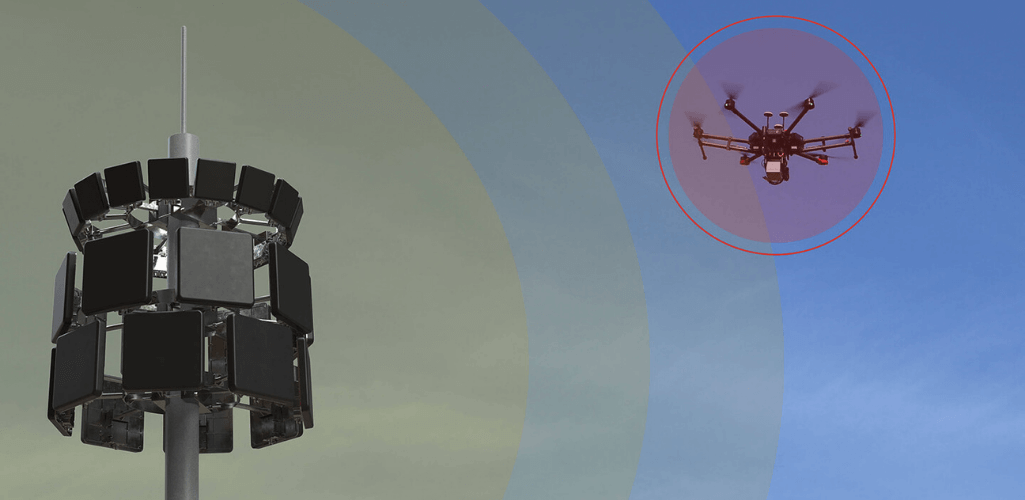
An effective drone detection strategy - driven by reliable and industry-leading technology - is crucial to combat this catch-22 scenario, significantly reducing or even removing false positives.
Enhanced data integrity represents a true return on investment - ensuring you can be reliably informed of an emerging incident and determine the threat levels to enable a quick, proportionate, cost-effective response, based on data-driven decision-making.
Having this information at your fingertips is also valuable for conducting effective gap analysis: Using analytics to identify any weak points, limitations or holes in your drone defence strategy and taking appropriate action, such as installing additional complementary solutions through a layered and scalable approach.
Don't Cry Wolf: React To Data-driven Insights
Drone detection raises the alarm and provides actionable insights to track the drone(s) in question and act if necessary.
Numerous methods exist, such as radio frequency (RF) detectors, radar, cameras, and acoustic devices - and they can be deployed in isolation, or in conjunction with each other as part of a layered solution. More of that later.
One such system is DJI AeroScope: An industry-leading plug-and-play RF detector which tracks real-time telemetry data from DJI drones within its range.
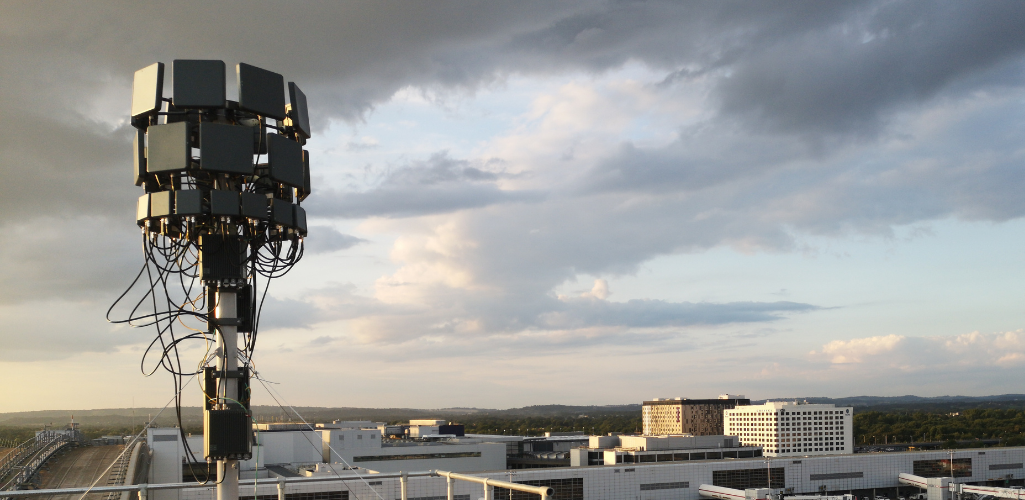
AeroScope provides details on:
Drone Serial Number
Make & Model
Precise Aircraft Location, including altitude
Aircraft Speed
Aircraft Direction
Home Position
Pilot Position (if pilot is using a GPS device).
This information - coupled with tools such as heat maps - provides a robust and trustworthy dataset to alert a potential drone threat and then facilitate informed decision-making about protecting the airspace.
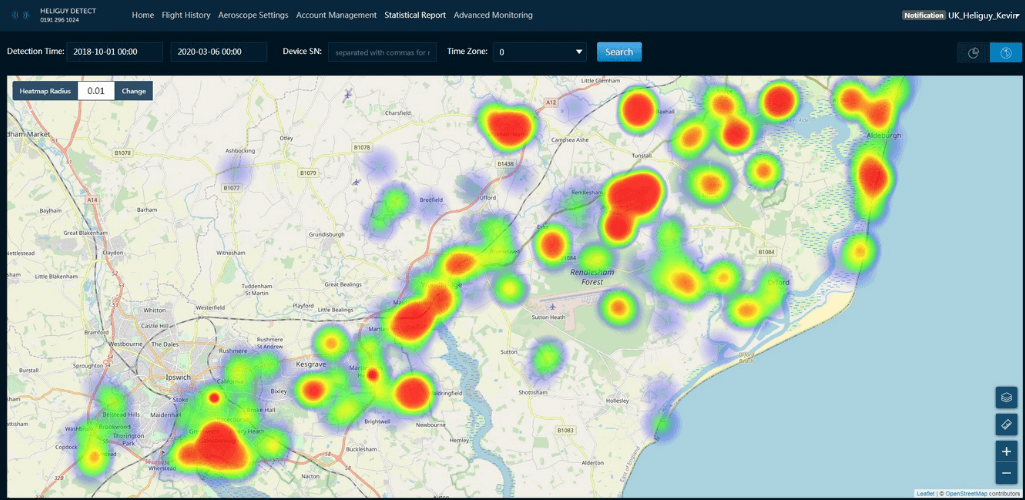
DJI AeroScope picks up all DJI drones in its range. For instance, this graphic shows a historical record of DJI drone flights detected by heliguy™ AeroScope units.
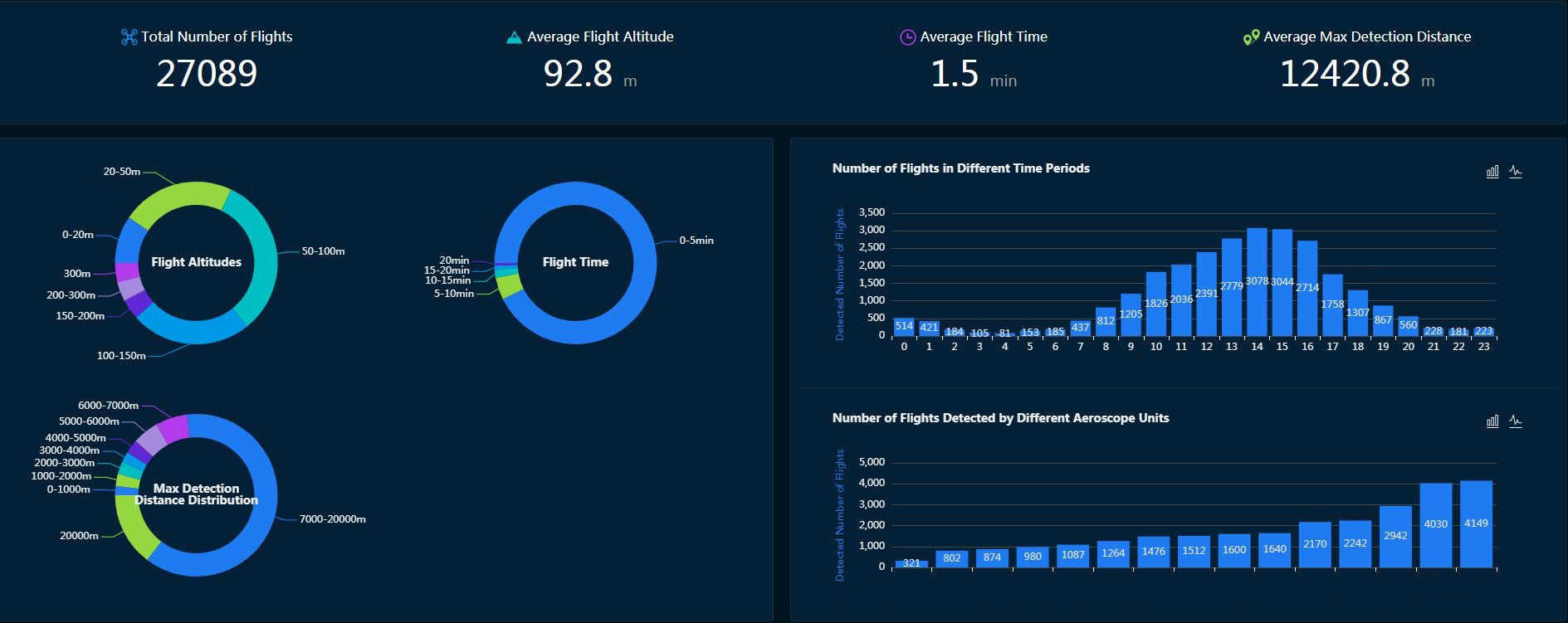
And the fact it is an RF sensor also ensures that it won't raise a false alarm by being triggered by a bird, for instance.
But, a key point is that AeroScope - available in mobile or more permanent systems (G8 or G16) - only detects DJI drones. While this is nothing to be scoffed at - as DJI drones account for around 80% of the drone market - it does mean there are detection gaps.
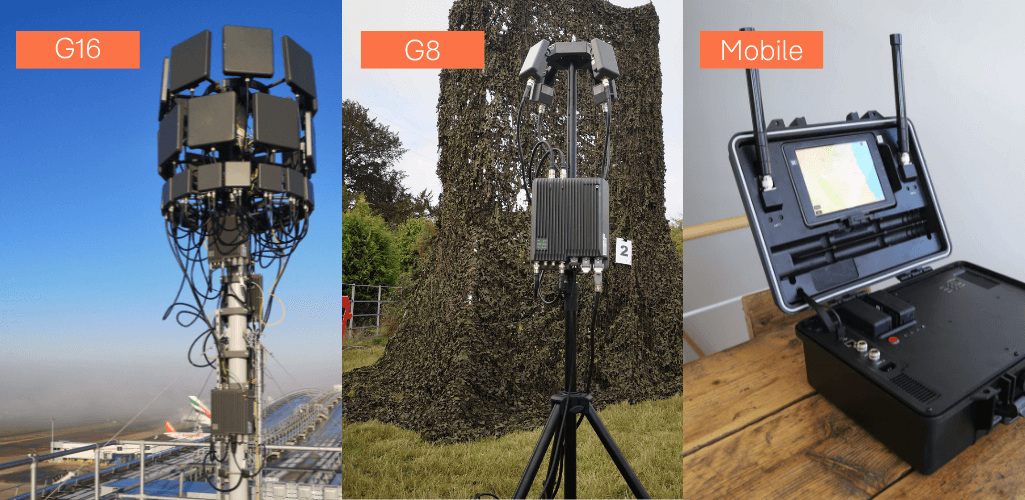
Therefore, it can be used in conjunction with other systems as part of a layered solution, to build a more comprehensive picture of drones penetrating your airspace.
For instance, AeroScope is a passive RF companion to the Dedrone RF-360 module, which detects almost all commercial, hobby and home-made drones.
Not only does this help identify a larger chunk of drones on the market, it means that the systems can be used as a dual passive RF solution, enabling the cross-referencing of detection data and threat levels, and ensuring reliable detection data.
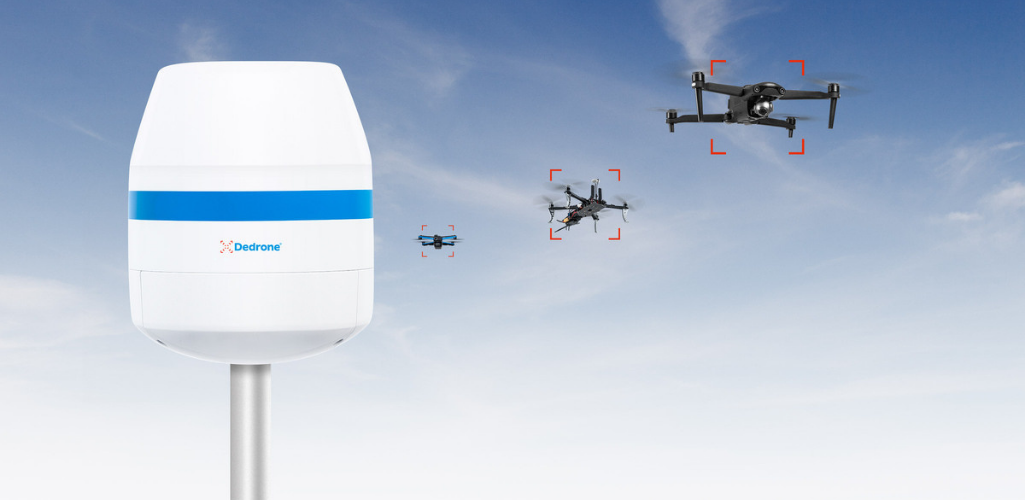
It's a running theme, but this type of data integrity is crucial for establishing robust and watertight emergency response SOPs.
And both systems can be used to build historical reports, which is another critical aspect of planning for future attacks. Use analytics to identify if a certain area is being retargeted, a particular individual is continually responsible, or to conduct effective gap analysis.
With this in mind, as drone detection can be built in a tiered approach, alternative technology can be added, as necessary, such as integrating RF detection with radar, for example, to build a more robust solution and plug any holes. In the case of Dedrone's Tracker software, third-party sensors can be added to it.
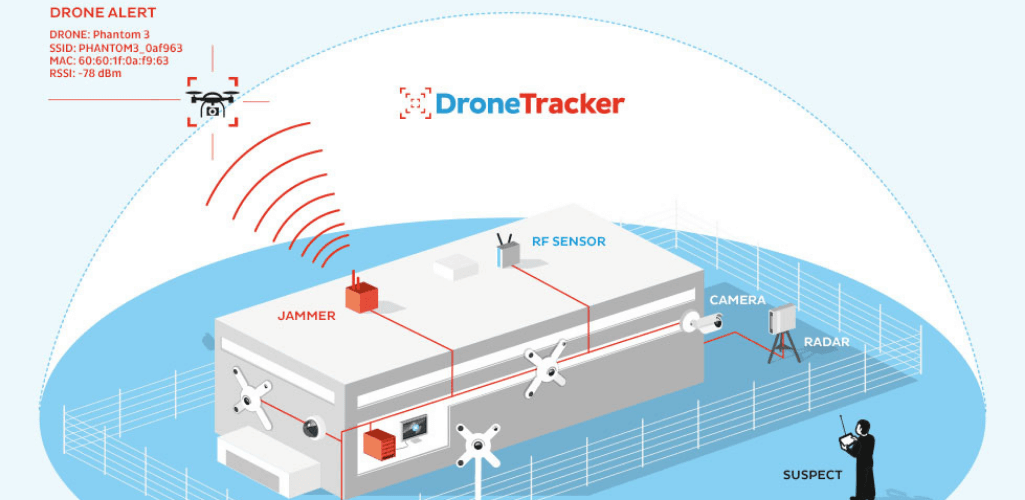
Middle-layer software is a useful tool for bringing numerous technologies together, and even extended to include counter-UAS technologies, such as jammers or anti-drone guns, to deal with a drone after the threat has been detected and scrutinised. Alerts can also be managed remotely and real-time alert notifications can be sent to smartphones.
Another middle-layer software solution is AirGuard by 911 Security, which integrates different hardware options - such as including AeroScope and other advanced sensors - into one platform. AirGuard manages all sensor data and displays it in one interface.
Summary
The Boy That Cried Wolf is a story which resonates through the ages. And even today, in our world of innovation, it still rings true.
Responding to a perceived drone threat is a case in point, but luckily, the technology is available to ensure you don't have to deal with false alarms or rest on your laurels and ignore a drone threat with dire consequences.
Picking fit-for-purpose drone detection sensors, such as DJI AeroScope, is not just critical for identifying drones, but is also extremely valuable for providing robust and reliable data sets to build emergency plans, deal with each incident accordingly and as cost-effectively as possible, and conduct gap analysis. In turn, this represents true ROI.
heliguy™ is an experienced drone defence specialist, offering installations, integrations and lifetime support. Contact heliguy™ to discuss your drone defence strategy.
